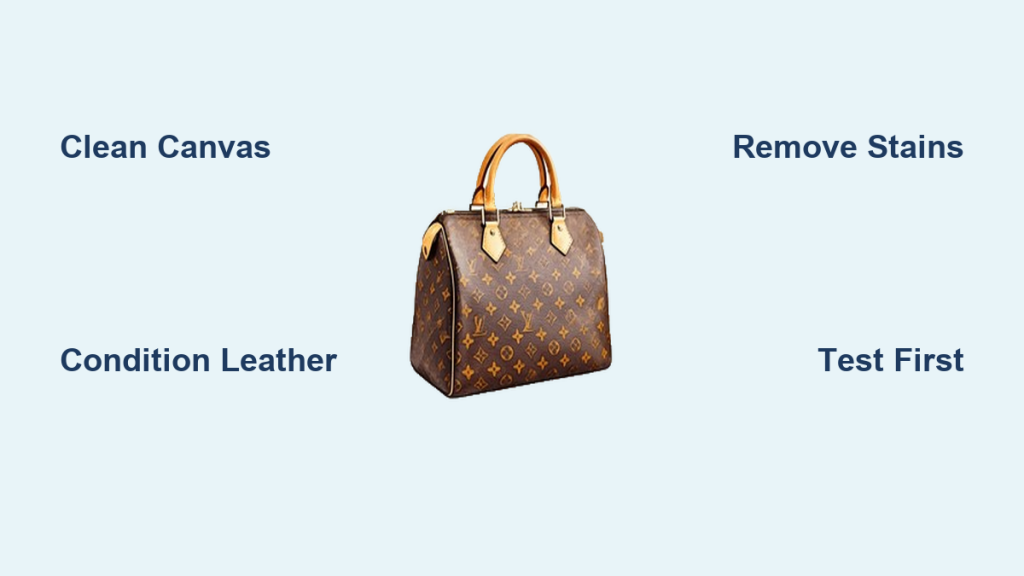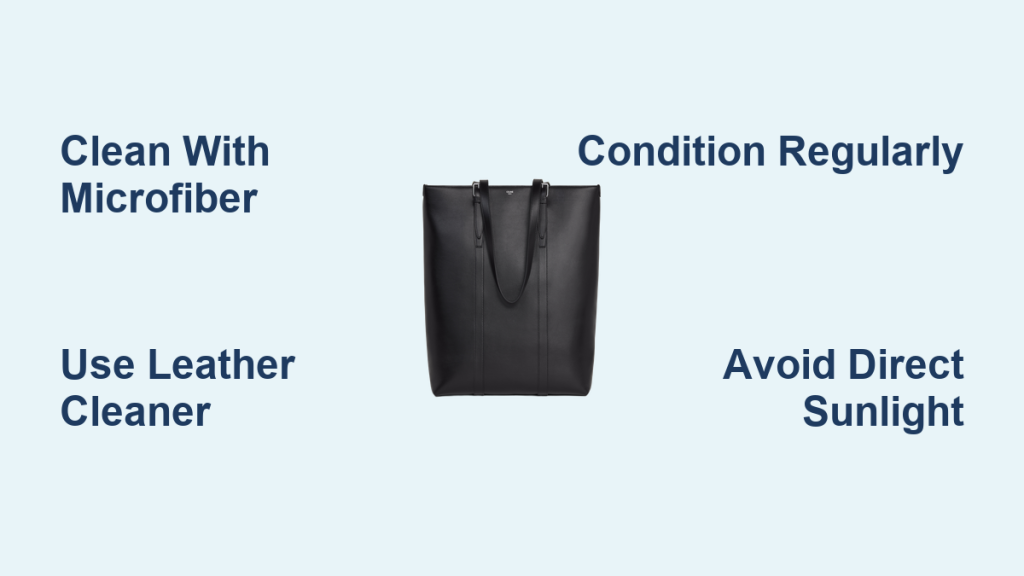Is your beloved Louis Vuitton bag looking a little lackluster? Scuffs, stains, and general wear and tear can diminish the beauty of this investment piece. You’re likely worried about damaging the delicate materials, but proper cleaning doesn’t have to be intimidating. A simple wipe-down with a soft cloth can often restore some shine.
This comprehensive guide will walk you through everything you need to know to safely and effectively clean your Louis Vuitton bag, from basic maintenance to tackling stubborn stains. We’ll cover cleaning different materials (canvas, leather, Vachetta), provide step-by-step instructions, and share expert tips to keep your bag looking its best for years to come. You’ll learn how to maintain its original beauty and protect your investment.
Understanding Louis Vuitton Materials

Before diving into cleaning, it’s crucial to understand the different materials used in Louis Vuitton bags, as each requires specific care.
Monogram Canvas
The most iconic Louis Vuitton material, Monogram Canvas is coated cotton, making it relatively durable and water-resistant. However, it can still stain and fade with improper care.
Vachetta Leather
This untreated cowhide leather is used for handles, straps, and trims. It’s known for its natural tan color, which darkens over time with exposure to light and oils. Vachetta is very sensitive to water and stains.
Epi Leather
Epi leather is a textured, dyed leather that’s more resistant to scratches and water than Vachetta. It’s less prone to staining but still requires gentle cleaning.
Damier Ebene & Azur Canvas
Similar to Monogram Canvas, Damier Ebene (brown) and Damier Azur (white) are coated cotton canvases offering good durability, though Azur is more susceptible to color transfer.
Essential Cleaning Supplies
Gather these supplies before you begin:
| Item | Quantity | Specifications |
|---|---|---|
| Soft Microfiber Cloths | 3-5 | Lint-free, different colors recommended to avoid color transfer |
| Louis Vuitton Leather Cleaner | 1 Bottle | Specifically formulated for LV leather (recommended) |
| Baby Wipes (Unscented) | 1 Pack | For quick canvas cleaning (test in an inconspicuous area first) |
| Distilled Water | 1 Bottle | Avoids mineral deposits |
| Leather Conditioner | 1 Bottle | For Vachetta leather to maintain suppleness |
| Soft-Bristled Brush | 1 | For cleaning textured Epi leather |
| Saddle Soap (Optional) | 1 Bar | For heavily soiled leather (use with caution) |
| Magic Eraser (Optional) | 1 | For stubborn marks on canvas (test in an inconspicuous area first) |
Cleaning Your Louis Vuitton Bag: Step-by-Step
This section is broken down by material type. Always test any cleaning product in an inconspicuous area first.
Cleaning Monogram & Damier Canvas
### Method 1: Quick Canvas Refresh
- Diagnosing the Issue: Determine the level of dirt. Light dust and grime can be removed with a simple wipe.
- Fix Steps: Dampen a microfiber cloth with distilled water. Gently wipe the canvas in a circular motion. Follow with a dry microfiber cloth to buff and remove any residue.
- Testing: Ensure no watermarks or discoloration appear during the process.
### Method 2: Deeper Canvas Cleaning
- Diagnosing the Issue: Noticeable stains or grime build-up.
- Fix Steps: Lightly dampen a microfiber cloth with a small amount of Louis Vuitton Leather Cleaner (or a very mild soap diluted in distilled water). Gently wipe the canvas, avoiding excessive moisture. Use a clean, damp cloth to remove any soap residue. Dry with a clean microfiber cloth.
- Testing: Test the cleaner on a hidden part of the bag first to ensure colorfastness.
Cleaning Vachetta Leather

### Method 1: Gentle Vachetta Maintenance
- Diagnosing the Issue: Regular maintenance to prevent excessive darkening and staining.
- Fix Steps: Use a clean, dry microfiber cloth to gently wipe the Vachetta leather. Avoid using water or any cleaning products unless absolutely necessary.
- Testing: Observe for any color transfer onto the cloth.
### Method 2: Addressing Light Stains on Vachetta
- Diagnosing the Issue: Minor watermarks or light dirt.
- Fix Steps: Gently blot the stain with a clean, dry microfiber cloth. Avoid rubbing, as this can spread the stain. Allow the leather to air dry naturally, away from direct sunlight. Apply a leather conditioner specifically designed for Vachetta leather to restore moisture and suppleness.
- Testing: Always test the conditioner in an inconspicuous area first.
Cleaning Epi Leather
- Diagnosing the Issue: Dust, grime, or minor scuffs.
- Fix Steps: Dampen a soft-bristled brush with distilled water. Gently brush the Epi leather in the direction of the grain. Wipe with a clean, damp microfiber cloth. Dry with a clean, dry microfiber cloth.
- Testing: Ensure the brush doesn’t scratch or damage the textured surface.
Preventing Future Damage and Maintenance
- Storage: Store your bag in a dust bag in a cool, dry place, away from direct sunlight.
- Avoid Overfilling: Overfilling can stretch and distort the bag’s shape.
- Protect from Rain: If caught in the rain, gently blot the bag with a clean, dry cloth and allow it to air dry.
- Handle with Clean Hands: Oils and dirt from your hands can transfer to the bag, especially Vachetta leather.
- Regular Cleaning: Wipe down your bag with a microfiber cloth weekly to remove dust and dirt.
Pro Tips for Louis Vuitton Care

- Avoid Harsh Chemicals: Never use alcohol-based cleaners, bleach, or abrasive cleaners.
- Professional Cleaning: Consider professional cleaning every 1-2 years for a thorough deep clean.
- Leather Conditioner is Key: Regularly conditioning Vachetta leather prevents it from drying out and cracking.
- Address Stains Immediately: The sooner you address a stain, the easier it will be to remove.
- Color Transfer Prevention: Be mindful of dark-colored clothing rubbing against light-colored canvas (Azur).
- Avoid Direct Sunlight: Prolonged exposure to sunlight can fade colors and dry out leather.
- Don’t Use Baby Powder: While some suggest using baby powder for oil stains, it can leave a residue.
When to Seek Professional Help
- Severe Stains: For stubborn stains that you can’t remove yourself.
- Significant Damage: If the bag has tears, rips, or broken hardware.
- Vachetta Leather Restoration: For extensive darkening or staining of Vachetta leather.
- Hardware Polishing: For tarnished or corroded hardware.
Professional Louis Vuitton repair services can be expensive, ranging from $100 to $500+ depending on the issue. However, they have the expertise and specialized products to restore your bag to its original condition.
FAQ
Q: Can I use a leather cleaner not specifically made for Louis Vuitton?
A: While you can, it’s risky. Louis Vuitton materials are unique. Using a non-approved cleaner could cause discoloration or damage. It’s always best to use a product specifically designed for LV.
Q: How do I remove ink stains from my Louis Vuitton bag?
A: Ink stains are notoriously difficult to remove. Try a small amount of rubbing alcohol on a cotton swab, gently blotting the stain. Test in an inconspicuous area first. If that doesn’t work, seek professional help.
Q: Will cleaning my bag affect the patina of the Vachetta leather?
A: Gentle cleaning should not significantly alter the patina. However, avoid excessive cleaning or harsh chemicals, as these can strip the leather of its natural oils and darken it unevenly.
Q: How do I store my Louis Vuitton bag when traveling?
A: Use the original dust bag and pack the bag in a structured suitcase to prevent it from losing its shape.
Alternative Solutions
If you’re hesitant to use any cleaning products, a professional leather restoration service is always an option. They can provide a thorough cleaning and repair service tailored to your bag’s specific needs. Another option is a specialized handbag spa, which focuses solely on cleaning and conditioning luxury bags.
Keep Your Louis Vuitton Looking Its Best
By following these steps, you can keep your Louis Vuitton bag looking beautiful for years to come. Remember that gentle care and regular maintenance are key to preserving its value and timeless appeal.
Have you tried any of these cleaning methods? Share your experience and tips in the comments below!




